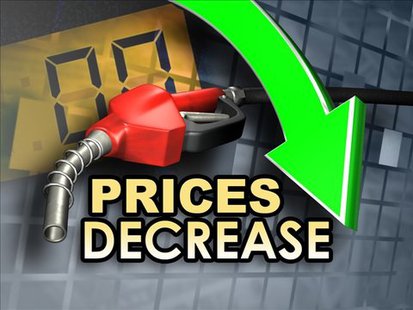
Gas prices in West Central Kentucky are 21 cents lower this week at $1.974, according to AAA East Central’s Gas Price Report.
Some of the largest weekly pump price savings in the country can be found in the Great Lakes and Central states this week. Eight out of the top 10 largest weekly decreases are states from the region: Ohio (-27 cents), Kentucky (-21 cents), Michigan (-21 cents), Wisconsin (-21 cents), Indiana (-19 cents), Illinois (-19 cents), Iowa (-15 cents) and Minnesota (-15 cents). All states in the region saw double-digit decreases, with South Dakota (-10 cents) seeing the smallest decrease on the week.
With a decrease of 1.8 million barrels, the region saw its first substantial drop in gasoline stocks in two months, according to the Energy Information Administration’s (EIA) latest report. At 58 million barrels, stock levels remain healthy and in line with levels this time last year. If stocks were to decrease again in the coming week that would traditionally mean a pump price increase, but given the current trend with oil prices, it’s possible prices could continue to decrease.
This week’s average prices: Western Central KY Average $1.974
Average price during the week of March 9, 2020 $2.186
Average price during the week of March 18, 2019 $2.482
Average prices of unleaded self-serve gasoline in various areas:
$2.000 Bowling Green
$1.668 Elizabethtown
$2.089 Louisville
$1.764 Owensboro
$2.049 Paducah
$1.59 Leitchfield
On the National Front
As crude oil prices trending slightly below $30/barrel today, Americans are seeing pump prices plummet across the country. On the week, gas price averages in 35 states decreased by double-digits, pushing the national average to $2.25, the cheapest price point of the year. AAA expects gas prices to continue trending cheaper, with a chance of the national average nearing $2/gallon.
At the close of Friday’s formal trading session on the NYMEX, West Texas Intermediate increased by 23 cents to settle at $31.73. Fears about COVID-19 and the crude price war between Russia and Saudi Arabia pushed prices lower last week. After President Trump announced that the U.S. Department of Energy would purchase oil to top off the Strategic Petroleum Reserve, crude prices rallied briefly. However, the announcement is unlikely to help increase crude prices further since the limited number of barrels the U.S. could purchase is small when compared to the dramatic reduction in global crude demand.
Moving into this week, crude prices are likely to continue decreasing as the world grapples with how to contain the ongoing international public health crisis and associated economic challenges that could lead to a global recession. Until the price war ends and fears about COVID-19 subside, domestic crude prices are likely to remain low.








